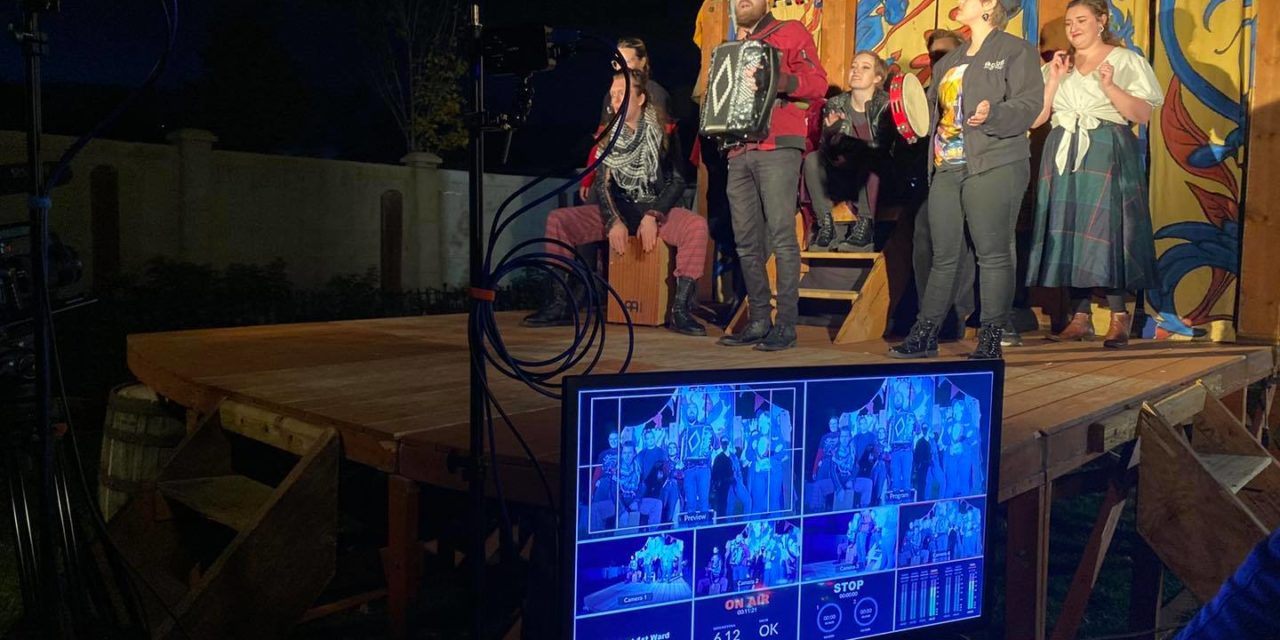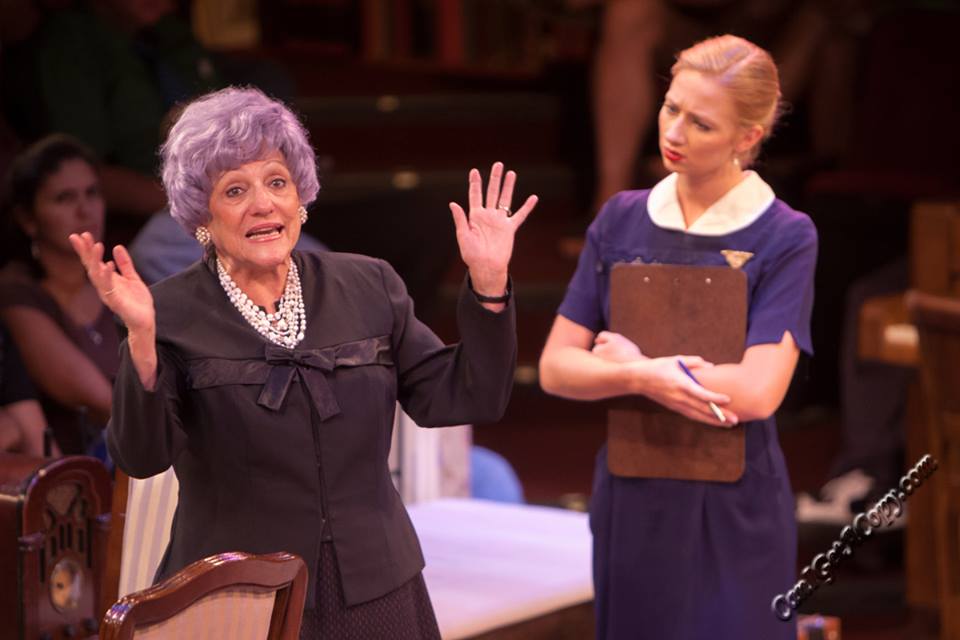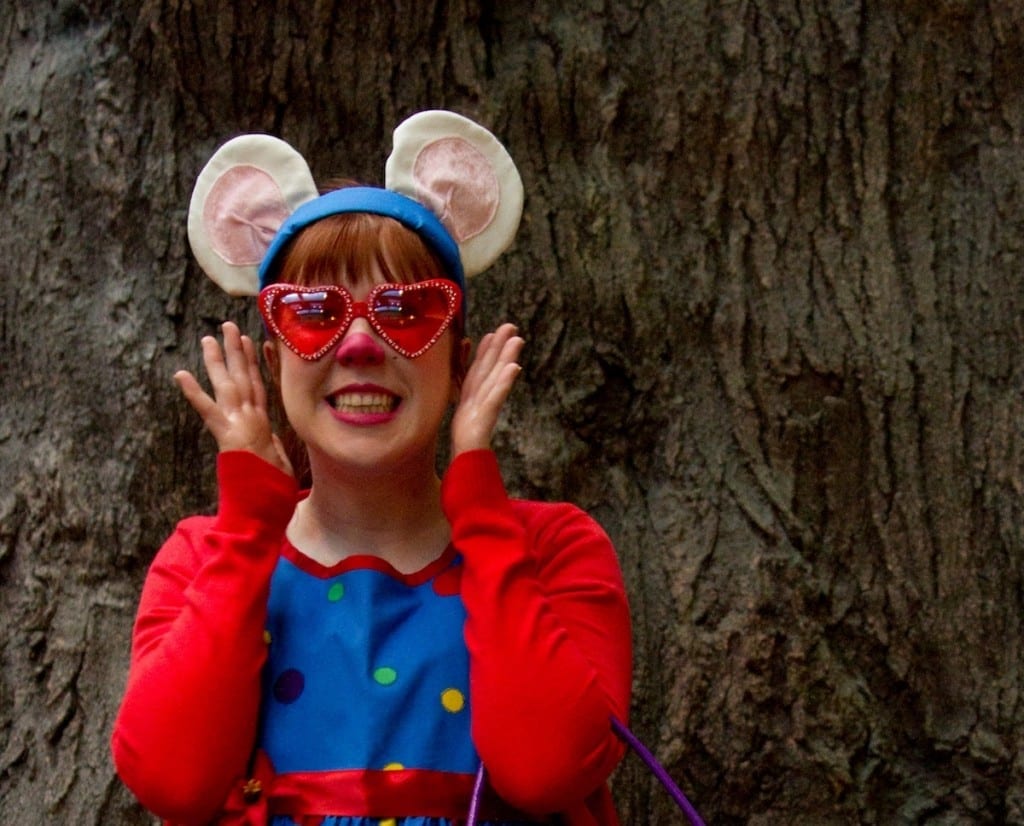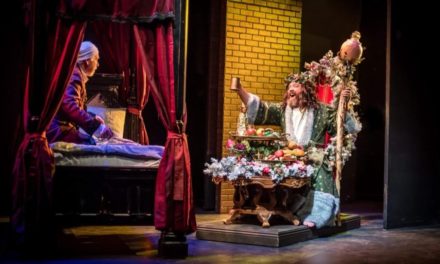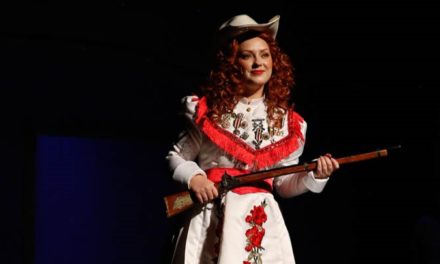OREM — Starting off with a fun pre-show concert performed by the cast, Grassroots Shakespeare Company’s production of Richard III is a unique kind of theater not often found in Utah. As they explain at the top of the show, it is “Shakespeare the way Shakespeare did Shakespeare,” meaning no director, no designers, very little rehearsal time, and the eight actors play up to six characters. (I would argue that this process is maybe closer to how Victorian theater was produced than Elizabethan theater, but that is not the point of this review.) The show is performed both with a live audience, and streaming on YouTube, and either way, it is such a fun environment for the audience, who are highly encouraged to participate with their reactions. This is not the most formal production audiences will ever see of Richard III, but it is absolutely a show worth watching.

Show closes October 30, 2021.
Because there are no director and designers, the audience gets a peek at the traditional way of creating theatre, where each actor plays their character the way they interpret said character. Some of these interpretations work really well together, and some of them clash. But, overall, it is one of the great things about theater, where actors used to specialize in characters when audiences really liked their version of Hamlet or Juliet. I loved Davey Morrison’s interpretation of Richard III, and I love that this is a tradition that Grassroots keeps alive.
All the actors were very strong. Did I agree with how every line was read and translated? Of course not. But what was so impressive was that they were all fully, perfectly ready to perform with minimal rehearsal. If there were any instances of missed lines or skipped sections, I never noticed. However, one of the difficult things was that the method of the whole production did make it tricky to distinguish between characters. Actors doubling roles did not always make it clear who they were supposed to be in some scenes, probably because there was little in the way of costume design and not enough rehearsal time to make acting choices unique for each character.

Davey Morrison as Richard III.
My favorite characters were Drake Hansen’s murderers that kill the Duke of Clarence towards the beginning, as “And I came hither on my legs,” is very funny coming from a puppet. Other notably impressive characters were Solomon Harmon’s Catesby and Daisy Sherman’s Richmond.
Though there were no designated designers, the visual components fit really well together. The Grassroots stage lends itself well to any Shakespeare show, the costume choices made by each actor all fit the same general chic aesthetic, and all the props used added to the story. Do I generally appreciate a more complex design, with secrets hidden in it to give the story depth? Yes. But this is very good, too. Additionally, I loved the ghost puppets, although they are supposed to be specific characters, and that idea got a little lost.
Compared to other Utah streaming productions the technical aspects of the livestream were all very impressive. The lighting, cameras, and microphones used for the streaming production all worked very well. The video and sound quality was great, and I could see and hear every actor well at all times. The lighting was really good on one camera, and kinda okay on the rest of them.
There’s no way for me to know if this was on purpose or not, but something about the lighting and cameras made it look like some things on stage had a red glow around them, which made everyone’s costumes, which already had some red in them, look very cool. The only artistic disruption was that it was not clear when and why the actors were supposed to look straight down the barrel of the camera. It was occasionally a slight shock to suddenly be making direct eye contact with Richard III, but it was never a major disruption.
I loved the music by Gary Argyle and Soren Budge. Throughout the whole show, I could hear it perfectly, but it never exceeded the volume of the actors on stage. The music added to the tone and intensity of the production without ever becoming its own character. The music in this show was like the perfect D&D playlist: always there adding to the emotion, but never too loud.
General design notes: I enjoy seeing glasses on stage, not necessarily as a character choice, but just because an actor needs to see. The way the sword fighting worked was a great way to be safe and a little funny, while the audience still gets to use the suspension of reality to fully understand the importance of what’s happening in the world of the play. I loved that Richard’s body stayed on stage after his death—it made me very aware of the impact of his death on everything that came after it. Finally, the choreography at the end of the play was excellent.
One of the final notes I took while watching was “Sort of feels like a staged version of a script reading,” but I feel I should clarify that I love script readings. Producing a fully-mounted Shakespeare production in such a short amount of time really shows the beauty of the actors’ talent, and puts so much focus onto the script. It is not the most analytical reading of the script, but it tells the audience the basic story, and lets their imagination fill in the rest. Richard III at Grassroots Shakespeare Company is absolutely one of my favorite recent Shakespeare productions, and it was such a fun show to be in the audience for, even from home.

This review was supported by a generous grant from the Orem CARE program.

